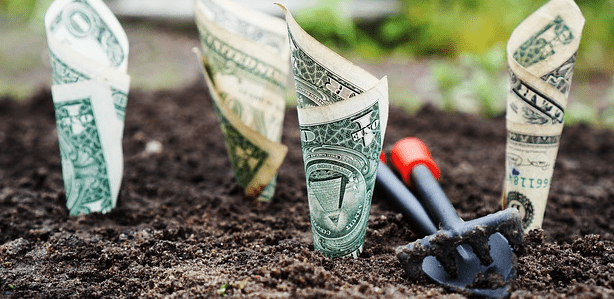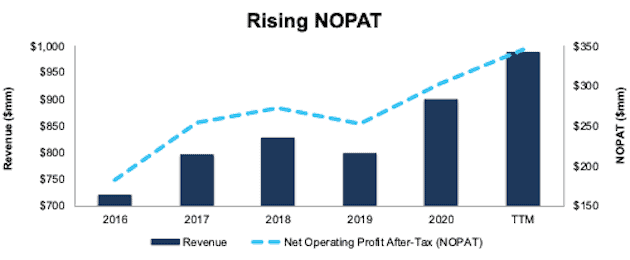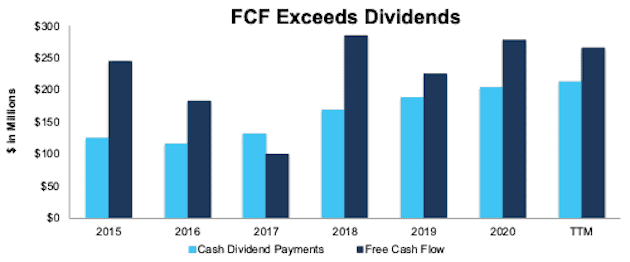Nine new stocks make our Safest Dividend Yields Model Portfolio this month, which was made available to members on May 20, 2021.
Recap from April’s Picks
On a price return basis, our Safest Dividend Yields Model Portfolio (+4.6%) outperformed the S&P 500 (-0.1%) by 4.7% from April 22, 2021, through May 18, 2021. On a total return basis, the Model Portfolio (+4.8%) outperformed the S&P 500 (-0.1%) by 4.9% over the same time. The best performing large cap stock was up 20% and the best performing small cap stock was up 8%. Overall, 14 out of the 18 Safest Dividend Yield stocks outperformed their respective benchmarks (S&P 500 and Russell 2000) from April 22, 2021, through May 18, 2021.
More reliable & proprietary fundamental data, proven in The Journal of Financial Economics, drives our research. Our proprietary Robo-Analyst technology[1] scales our forensic accounting expertise (featured in Barron’s) across thousands of stocks[2] to produce an unrivaled database of fundamental data.
This Model Portfolio only includes stocks that earn an Attractive or Very Attractive rating, have positive free cash flow and economic earnings, and offer a dividend yield greater than 3%. Companies with strong free cash flow provide higher quality and safer dividend yields because we know they have the cash to support the dividend. We think this portfolio provides a uniquely well-screened group of stocks that can help clients outperform.
Featured Stock for May: Artisan Partners Asset Management (APAM: $51/share)
Artisan Partners Asset Management (APAM) is the featured stock in May’s Safest Dividend Yields Model Portfolio.
Artisan Partners has grown revenue by 6% compounded annually and net operating profit after-tax (NOPAT) by 14% compounded annually over the past four years. Artisan Partners’ NOPAT margin increased from 25% in 2016 to 35% over the trailing-twelve-months (TTM) while its return on invested capital (ROIC) fell from 169% to 121% over the same time.
The firm’s economic earnings, or the true cash flows of the business, nearly doubled from $175 million in 2016 to $328 million over the TTM.
Figure 1: Artisan Partners’ Revenue & NOPAT Since 2016
Sources: New Constructs, LLC and company filings
Cash Flow Supports Dividend Payments
Artisan Partners has paid a dividend each year since 2013, and its dividend in 2020 equaled $3.39/share. The current quarterly dividend, when annualized provides a 6.9% dividend yield.
Since 2015, Artisan Partners’ cumulative FCF easily covers its annual dividend payments. Over the past six years, Artisan Partners generated $1.3 billion (32% of current market cap) in FCF while paying $929 million in dividends, per Figure 2.
Figure 2: Artisan Partners’ FCF vs. Dividends Since 2015
Sources: New Constructs, LLC and company filings
Companies with strong FCF provide higher quality dividend yields because we know the firm has the cash to support its dividend. On the other hand, dividends from companies with low or negative FCF cannot be trusted as much because the company may not be able to sustain paying dividends.
APAM Is Undervalued
At its current price of $51/share, APAM has a price-to-economic book value (PEBV) ratio of 0.8. This ratio means the market expects Artisan Partners’ NOPAT to permanently decline by 20%. This expectation seems overly pessimistic given that Artisan Partners has grown NOPAT by 14% compounded annually over the past four years and from -$258 million in 2013 (earliest year of our model) to $346 million over the TTM.
Even if Artisan Partners’ NOPAT margin falls to 24% (vs 35% TTM) and the firm grows NOPAT by just 2% compounded annually over the next decade, the stock is worth $66/share today – a 29% upside. See the math behind this reverse DCF scenario.
Critical Details Found in Financial Filings by Our Robo-Analyst Technology
Fact: we provide superior fundamental data and earnings models – unrivaled in the world.
Proof: Core Earnings: New Data & Evidence, forthcoming in The Journal of Financial Economics.
Below are specifics on the adjustments we make based on Robo-Analyst findings in Artisan Partners’ 10-K and 10-Qs:
Income Statement: we made $168 million in adjustments with a net effect of removing $114 million in non-operating expenses (13% of revenue). See all adjustments made to Artisan Partners’ income statement here.
Balance Sheet: we made $681 million in adjustments to calculate invested capital with a net decrease of $673 million. The most notable adjustment was $482 million (49% of reported net assets) in deferred tax assets. See all adjustments to Artisan Partners’ balance sheet here.
Valuation: we made $707 million in adjustments with a net effect of decreasing shareholder value by $185 million. Apart from total debt, one of the most notable adjustments to shareholder value was $261 million in excess cash. This adjustment represents 6% of Artisan Partners’ market value. See all adjustments to Artisan Partners’ valuation here.
This article originally published on May 26, 2021.
Disclosure: David Trainer, Kyle Guske II, Alex Sword, and Matt Shuler receive no compensation to write about any specific stock, style, or theme.
Follow us on Twitter, Facebook, LinkedIn, and StockTwits for real-time alerts on all our research.
[1] Harvard Business School features our research automation technology in the case Disrupting Fundamental Analysis with Robo-Analysts.
[2] See how our models overcome flaws in Bloomberg and Capital IQ’s (SPGI) analytics in the detailed appendix of this paper.


